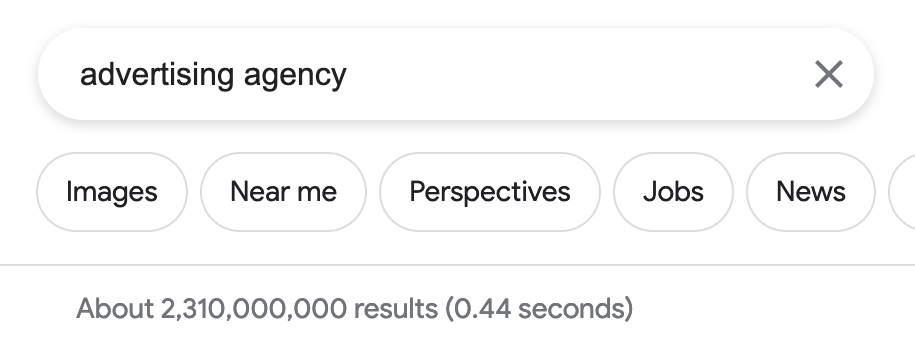Right now, your business is waging a multi-front battle: Against your competitors. Against your marketing budget. And most importantly, for a share of your target market’s mind.
Odds are you don’t have an infinite war chest to draw from, which means — just like in any battle — you need to strategize how you allocate resources. Fortunately, the right media buying strategy can maximize your budget by building brand awareness through a multi-dimensional approach.
As discussed in our previous blog, some media are better suited for certain things. But no matter which medium you use, you’ll get an added boost of branding as a result.
Let’s explain why.
The Difference Between Brand Recognition and Brand Awareness
Before we dive into the facts and figures, let’s define two terms that are sometimes used interchangeably — but shouldn’t be: Brand recognition and brand awareness.
Brand recognition is when a prospect knows your company on a surface level. Items in brand recognition include those shallow, surface-level identifiers of your company:
- Name
- Industry
- Logo
- Jingle
If you could identify golden arches and “I’m lovin’ it” as McDonald’s, but (for some reason) thought they were in the car detailing business, you’d be lacking brand awareness.
Brand awareness means you have a deeper level of familiarity that might border on loyalty. If you are brand aware, you are more likely to buy from that company. Making prospects brand aware requires playing the long game.
But — and this is important — no matter what, media buying will help with both.
Paid Search Media Buying + Your Brand
Let’s pretend you work in a saturated market with hundreds — if not thousands — of competitors.
We feel your pain.
Building brand equity could seem a Herculean task.
But what if your brand could be associated with the first listing for any search engine query?
What if the first thing that pops up when someone wants an answer to a question, a general want or a specific need was your company?
It can happen with paid search… if you’re willing to spend the money. And generally speaking, paid search can be worth every penny.
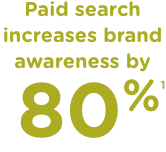
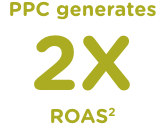
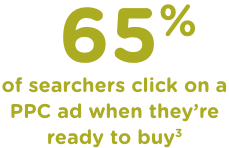
These are almost supernatural statistics. Your brand can be associated with literally anything you want it to be, which makes this one of the most effective and instantaneous ways to increase your brand recognition, awareness and yes — even sales.
Social Media
Everybody (well, just about everybody) has at least one social media account.
Here in America:
- 52% use social media to discover new brands and products 4
- 78% use social media to learn about new brands 5
- 7 is the average number of social media accounts per person 6
- 2 hours per day is the average time spent on social media 7
So, depending on your Key Performance Indicators (KPIs), budget (social media is generally very cost effective) and target demographics (some apps skew towards younger users), paid social media might be the logical place to start. Just be sure to put your efforts into a platform that aligns seamlessly with your audience.
And if you really want to know how to engage with your followers, consider using streams on Hootsuite. Do that and you’ll understand how your followers perceive your company, which will allow you to fine-tune your content strategy and messaging.
Radio
Get ready to have your mind blown.
Out of all media, one reigns supreme in weekly frequency among practically all age ranges.
It’s not social media. And it’s not TV either.
Radio — yes, AM/FM radio — takes the prize.
Here are some other head-turning stats showing how radio media buying helps brand awareness:
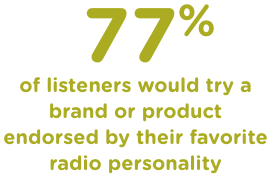
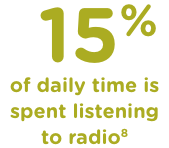
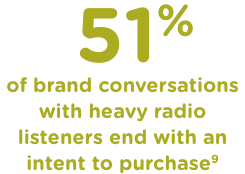
Perhaps the most interesting thing is that, even in today’s non-stop-content-streaming environment, terrestrial radio blows the doors off ad-supported Spotify and Pandora! Just look at the findings of this “share of ear” report.
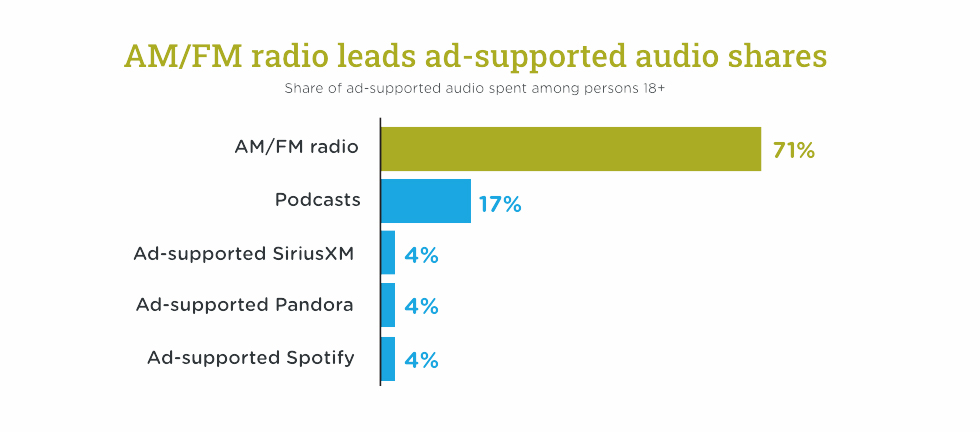
However, we would be remiss to completely ignore streaming radio, where you can target with almost surgical-like precision. This is especially important if your audience is niche or you want to target a very specific geography.
In short: if you want a cost-effective method of building brand awareness, radio probably deserves consideration.
TV
Nobody can deny TV’s immense branding appeal. Where else can you reach millions of people simultaneously?
At the same time, the overall cost of delivering a broadcast spot is often an obstacle; the message, while reaching countless eyeballs, only appeals to a portion — but that’s changing in an important way thanks to the explosion of addressable TV.
This new technology delivers in ways beyond zoned cable and OTT by giving brands the ability to target not just neighborhoods, but specific households based on select geography, demographics and behaviors.
It’s amazingly exact targeting, amplified because just about anything with a screen can show a commercial nowadays.
There are also other benefits of traditional TV media buying for branding awareness:
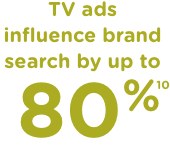
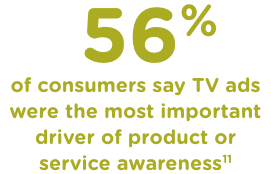
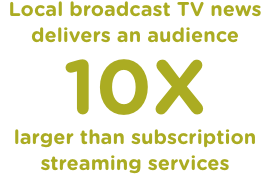
Here’s one more important note: TV doesn’t just mean commercials. TV also means branded content within a news program. For example, severe weather break-ins sponsored by a roofing company. And given that the average viewer spends three hours per day glued to their TV, opportunity abounds to build your brand.
So far, we’ve been focusing primarily on interacting with screens.
But we can’t forget about interacting with good ol’ fashioned print, because this medium still packs a branding punch.
For example, did you know that 82% of consumers trust print ads the most when making a purchase decision?
It makes sense. You are consciously deciding which publication to buy and hold instead of being presented a piece of content.
But there are also other numbers that show print media buying enhances brand awareness.
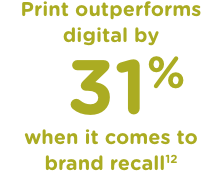
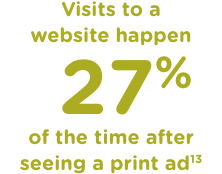
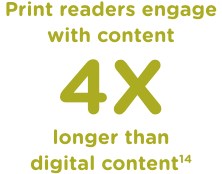
But that’s not all.
Print ads can appear anywhere in a publication: The cover, the centerfold (not that kind) and wraps.
Out Of Home (OOH)
Does it ever seem like you can’t escape brand messaging, even when you’re running errands?
You’ll probably see it on:
- Billboards
- Transit stations
- Public transportation
- Gas station pumps
Businesses advertise on these examples — and many, many more —because OOH is proven to increase brand awareness.
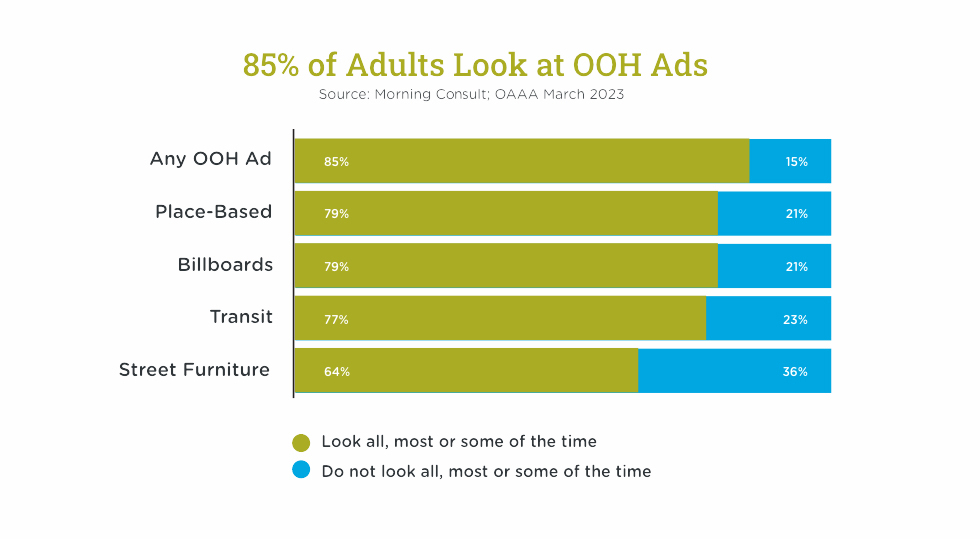
And the potential impact is even greater for retailers.
- 68% of adults notice OOH ads on their way to shopping in-person at a store
- 68% of adults notice OOH ads very close to or right outside a store
- 75% of adults notice OOH ads inside a store
- OOH ads have a moderate or significant impact on 42% of in-person purchase decisions
So, while other mediums might have a little more cache, a well-placed and eye-catching outdoor advertisement has the potential to pay off in a big way.
Ready to Win Your Branding Battle?
Hopefully you now have an idea of how media buying can bolster your brand’s awareness, no matter the medium.
But since the options are seemingly endless and your budget… probably isn’t… you should explore a customized strategy.
Stealth Creative’s media department can help you create one. Drop us a line and we’ll get to boosting your brand’s revenue (and awareness).

Brian Reinhardt
Brian Reinhardt is a Senior Copywriter at Stealth Creative whose first unpublished story was penned at the age of eight. Yes, it involved hoverboards, lasers and robots. His days are filled with researching, content creation and SEO strategy. His nights are spent with family, reading and managing too many fantasy sports teams. Nine is his favorite number.
- https://www.foundsm.com
- https://www.webfx.com
- https://digitalmarketinginstitute.com
- https://www.statista.com
- https://sproutsocial.com
- https://www.forbes.com
- https://www.statista.com
- https://musicalpursuits.com
- https://www.rab.com
- https://www.nyinterconnect.com
- https://www.brandzooka.com
- https://www.newsworks.org.uk
- https://financesonline.com
- https://financesonline.com
